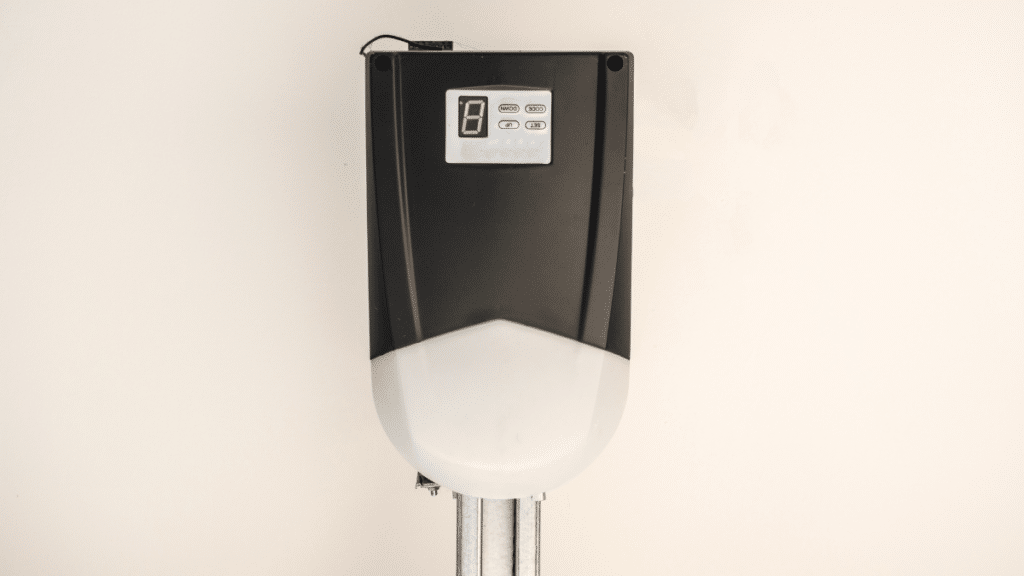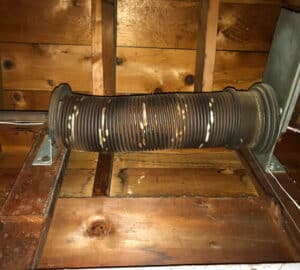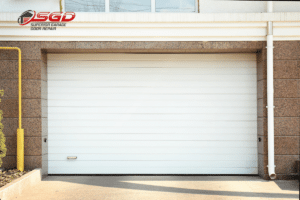Is your garage door motor causing problems or making strange noises? Upgrading to a new motor or opener could enhance the security and functionality of your garage door system. Whether you’re experiencing issues with your current motor or looking to upgrade, our comprehensive guide and expert tips will help you efficiently replace your garage door motor or opener.
Key Takeaways:
- Replacing a garage door motor or opener can improve the security and functionality of your garage door system.
- Identifying signs that indicate you might need to replace your garage door motor or opener can help you avoid potential safety issues.
- Comparing the benefits and drawbacks of garage door motor replacement versus repair can help you make an informed decision.
- Proper installation, wiring, and programming is crucial for ensuring your new garage door motor functions correctly and integrates with your garage door system.
- Regular maintenance and troubleshooting can prolong the lifespan of your new garage door motor and minimize potential disruptions.
Signs You Need a Garage Door Motor Replacement
If you’re experiencing problems with your garage door system, it may be time to replace your motor or opener. Failure to replace a faulty motor can lead to safety risks and further damage to your garage. In this section, we will cover common signs that indicate you may need garage door motor repair or replacement. Identifying these signs early will prevent potential safety hazards and ensure the longevity of your garage door system.
Unusual Noises
If you hear grinding or scraping noises coming from your garage door motor or opener, it may be a sign that the motor is failing. This noise is caused by worn-out gears or bearings, which can cause significant damage to the motor over time.
Motor Failure
If your garage door motor stops working altogether, it is a clear indicator that it’s time for a replacement. There are a variety of reasons why you might experience motor failure, including electrical issues or general wear and tear.
Erratic Operation
If your garage door opens or closes unevenly or with sudden jerks, it may be a sign that your motor is struggling to keep up. This issue can be caused by a faulty motor, poor lubrication or worn-out garage door springs.
Slow Response Time
A slow or delayed response time when opening or closing your garage door can be another sign of motor failure. This can be caused by a variety of issues, including worn-out gears, a damaged motor capacitor or electrical issues.
If you experience any of these issues, consider consulting a professional for garage door motor repair or replacement. Keeping your garage door motor in optimal condition is crucial to maintaining the safety and security of your home.
Garage Door Motor Replacement vs. Repair
When faced with issues related to the garage door motor, homeowners often grapple with the question of whether to opt for a repair or replacement. Ultimately, the decision hinges on several factors, including the extent of the problem, the age of the motor, and the cost of each option.
Problems requiring simple repairs, such as a worn-out motor gear or a broken chain, may be more cost-effective to fix. In contrast, major issues like a burnt-out motor or extensive damage to the door mechanism may necessitate a complete replacement.
Note: It’s important to bear in mind that repairing an old or faulty motor may be a temporary solution, and the same or similar issues may soon resurface.
Aside from cost, other factors to consider when deciding between repair and replacement include functionality, efficiency, safety, and security. A new motor may offer better features, enhanced safety mechanisms, and more modern technology, potentially increasing the value of your property.
Additionally, when dealing with complex repairs or replacements, it’s crucial to hire a professional with expertise in garage door motor installation and repair. Attempting a DIY job or relying on an unqualified technician can result in unsafe operation, further damage to the system, or even injury to people or pets.
Garage Door Motor Replacement and Repair: A Comparison
| Factors | Motor Replacement | Motor Repair |
|---|---|---|
| Cost | Can be more expensive depending on the nature of repairs needed and the quality of the motor | Can be more affordable, but only for minor repairs |
| Efficiency | More efficient and less prone to future problems than a repaired motor | The efficiency may be diminished over time and may need frequent repair/servicing |
| Technology | Offers upgraded technology that may enhance safety, security and functionality | Not applicable |
| Aesthetics | A new motor can provide a fresh look to your garage | Repairs do not enhance the appearance of the garage system |
| Maintenance | Requires less maintenance in the long run | May need more frequent maintenance and periodic repair in the future |
| Longevity | A new motor can significantly increase the useful lifespan of your system | The lifespan of an old motor is usually limited no matter how intensive the repair |
| Safety | Offers latest safety features, ensuring a safer garage door system | The motor repair may not address safety issues and may compromise the efficiency |
Rather than rushing into any decisions, homeowners should carefully weigh the pros and cons of repair and replacement in light of their individual circumstances. If in doubt, it’s always best to consult a professional technician who can assess and advise on the best course of action.
Steps to Replace a Garage Door Motor
When it comes to replacing a garage door motor or opener, it’s essential to follow a systematic process to ensure that your new motor integrates correctly with your garage door system and functions smoothly. Here is a step-by-step guide to replacing a garage door motor or opener.
Step 1: Gather necessary tools
Before starting the replacement process, make sure you have the necessary tools, including:
- Screwdriver set
- Adjustable wrench
- Pliers
- Stepladder
- New garage door motor or opener
Step 2: Disconnect power
To avoid potential safety hazards, such as electrocution or injury, disconnect the power source to your garage door system.
Step 3: Remove the old motor
Use a ladder to access the motor unit, remove the cover, and disconnect any wiring or brackets holding the motor in place. Once the motor is free, carefully remove it from the ceiling and set it aside.
Step 4: Install new motor
Start by placing the new motor where the old one was. Follow the manufacturer’s instructions for wiring and programming the new motor to ensure that it integrates correctly with your garage door system and operates smoothly.
Step 5: Test the motor
After installing the new motor, reconnect the power source to your garage door system, lower the door, and test the motor to make sure it’s functioning correctly. If you encounter any issues, refer to the troubleshooting section or consult a professional garage door technician.
By following these steps, you can replace your garage door motor or opener safely and efficiently, ensuring smooth and reliable operation for years to come.
Troubleshooting Common Issues with Garage Door Motors
Garage door motors are an essential component of your garage door system. However, even with routine maintenance, motors can develop issues that require troubleshooting. In this section, we’ll explore some of the most common issues you may face and offer tips for resolving them.
Problem: Motor Won’t Open or Close the Door
If your garage door motor won’t open or close the door, the issue could be a lack of power or an issue with the motor’s settings. First, check that the motor is receiving power and that the electrical outlet is working correctly. If the motor is receiving power, check the limit settings to ensure they are properly adjusted. Also, check the photo-eye sensors to ensure they are aligned and functioning correctly.
Problem: Unusual Noises
If your motor is making unusual noises, such as grinding or screeching, the issue could be a lack of lubrication. Check the motor’s moving parts, such as the bearings and rollers, and lubricate them as needed. If this doesn’t solve the issue, it could be a sign of a more serious problem, such as a worn-out motor or gearbox.
Problem: Door Reverses Before Closing
If your garage door starts to close but then reverses before reaching the ground, the issue could be misaligned or dirty photo-eye sensors. Clean the sensors and ensure they are properly aligned. You can also adjust the force setting on the motor to see if that improves the door’s operation.
Importance of Regular Maintenance
Regular maintenance is crucial for the longevity and efficient operation of your garage door motor. This includes periodically lubricating the moving parts, inspecting the cables and springs for wear and tear, and checking the electrical connections for any signs of damage. By performing routine maintenance, you can avoid potential disruptions and prolong the lifespan of your motor.
In the next section, we’ll outline the step-by-step process for replacing a garage door motor or opener, ensuring seamless operation and maximum security for your home.
Conclusion
In conclusion, replacing a garage door motor or opener can greatly improve the functionality and security of your garage. By following the steps outlined in this guide, you can ensure a smooth and successful replacement process. It’s important to prioritize safety and consult a professional for complex installations or repairs to avoid potential safety issues.
Regular maintenance and troubleshooting will also help prolong the lifespan of your new motor, allowing you to enjoy reliable and efficient garage door operation for years to come. Remember to inspect and maintain the motor components, such as the tracks, rollers, and hinges, on a regular basis to avoid issues that may require repairs or replacements in the future.
If you are experiencing issues with your garage door motor or opener, don’t hesitate to take action. Delaying repairs or replacements can lead to further damage and safety risks. Contact a reputable garage door specialist to assess and resolve the issue promptly and efficiently.
FAQ
How do I know if I need to replace my garage door motor or opener?
There are a few signs that indicate you might need a replacement. If your motor is not functioning, making unusual noises, or if your garage door is operating erratically, it’s time to consider replacing your motor or opener.
Is it more cost-effective to repair or replace my garage door motor?
The answer depends on the extent of the problem and the age of your motor. In some cases, a simple repair may be sufficient and more affordable. However, if your motor is old or experiencing major issues, it’s often more cost-effective and efficient to replace it.
Can I replace a garage door motor myself, or should I hire a professional?
While some homeowners may have the necessary skills to replace a garage door motor themselves, it is recommended to hire a professional for complex installations or repairs. Professionals have the knowledge and tools to ensure a safe and proper installation, reducing the risk of accidents or malfunctions.
What are the basic steps to replace a garage door motor?
The general steps for replacing a garage door motor include gathering the necessary tools, disconnecting power, removing the old motor, installing the new motor, and properly wiring and programming it. It’s important to follow manufacturer instructions and consult professional guidance, if needed.
What should I do if my newly replaced garage door motor encounters issues?
If you experience any problems with your newly replaced garage door motor, it’s advisable to refer to the troubleshooting section of the manufacturer’s manual. Additionally, regular maintenance, such as lubricating moving parts and inspecting electrical connections, can help prevent and resolve issues with your garage door motor.








